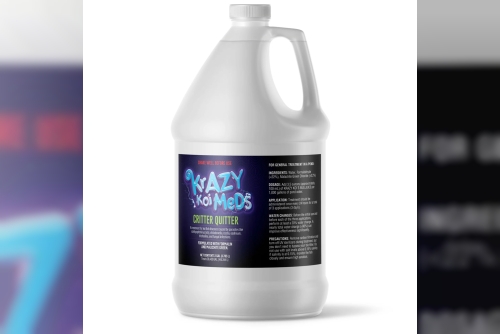Fin rot is one of the most common bacterial infections that affects aquarium and pond fish. Left untreated, it can quickly progress, leading to damaged fins, stress, and even death in severe cases. One of the most effective antibiotics used to combat this infection is doxycycline. This blog explores the role of doxycycline in treating fin rot, including how it works, when to use it, and how to prevent future outbreaks in your aquatic environment.
Understanding Fin Rot in FishFin rot is a bacterial disease that affects the fins and tail of fish, causing them to fray, discolor, and deteriorate over time. It is most often associated with poor water quality, stress, or injury, which allows harmful bacteria to attack weakened fish.
Common Causes of Fin RotPoor water quality – High ammonia, nitrite, or nitrate levels.
Overcrowding – Too many fish in one tank or pond.
Stress – From sudden temperature changes or aggressive tankmates.
Injuries – Open wounds can invite bacterial infections.
Ragged or torn fins
White or reddish edges on fins
Inflammation near the base of fins
Lethargy and loss of appetite
Doxycycline is a broad-spectrum antibiotic commonly used in both human and veterinary medicine. For aquatic animals, it is effective against gram-negative bacteria, which are often responsible for fin rot.
How Doxycycline WorksDoxycycline prevents bacteria from producing the proteins they need to grow and reproduce. This stops the spread of the infection and gives the fish’s immune system time to heal and repair damaged tissues.
Administration and DosageAlways follow precise dosage guidelines for fish.
Doxycycline can be administered through medicated food or dissolved in water.
Complete the full course of treatment to prevent bacterial resistance.
While doxycycline is highly effective, prevention is the best long-term solution.
Maintain clean water through regular changes and filtration.
Avoid overcrowding and stress factors.
Quarantine new fish before introducing them to your main tank or pond.
Final ThoughtsFin rot is a serious but treatable condition. With early detection and the right antibiotic treatment like doxycycline, fish can recover fully and return to good health. However, prevention through proper care and maintenance is the key to long-term success in keeping your aquarium or pond disease-free.
FAQsQ1: Can doxycycline cure fin rot completely?
Yes, when used properly, doxycycline can eliminate the bacteria causing fin rot and allow fins to regrow.
Q2: Is fin rot contagious to other fish?
Yes, bacteria can spread quickly in poor water conditions, which is why immediate treatment and improved water quality are important.
Q3: How long does doxycycline take to work for fin rot?
Visible improvement often occurs within a few days, but completing the full course is essential for recovery.
Q4: Can fin rot heal without antibiotics?
Mild cases may improve with water changes and reduced stress, but moderate to severe infections usually require antibiotics like doxycycline.
Yes, fins can regenerate if the infection is treated early and the fish remains in a healthy environment.










 Rent Furnished One Bedroom Apartment for a Premium Experience in Bashundhara R/A.
Rent Furnished One Bedroom Apartment for a Premium Experience in Bashundhara R/A.

